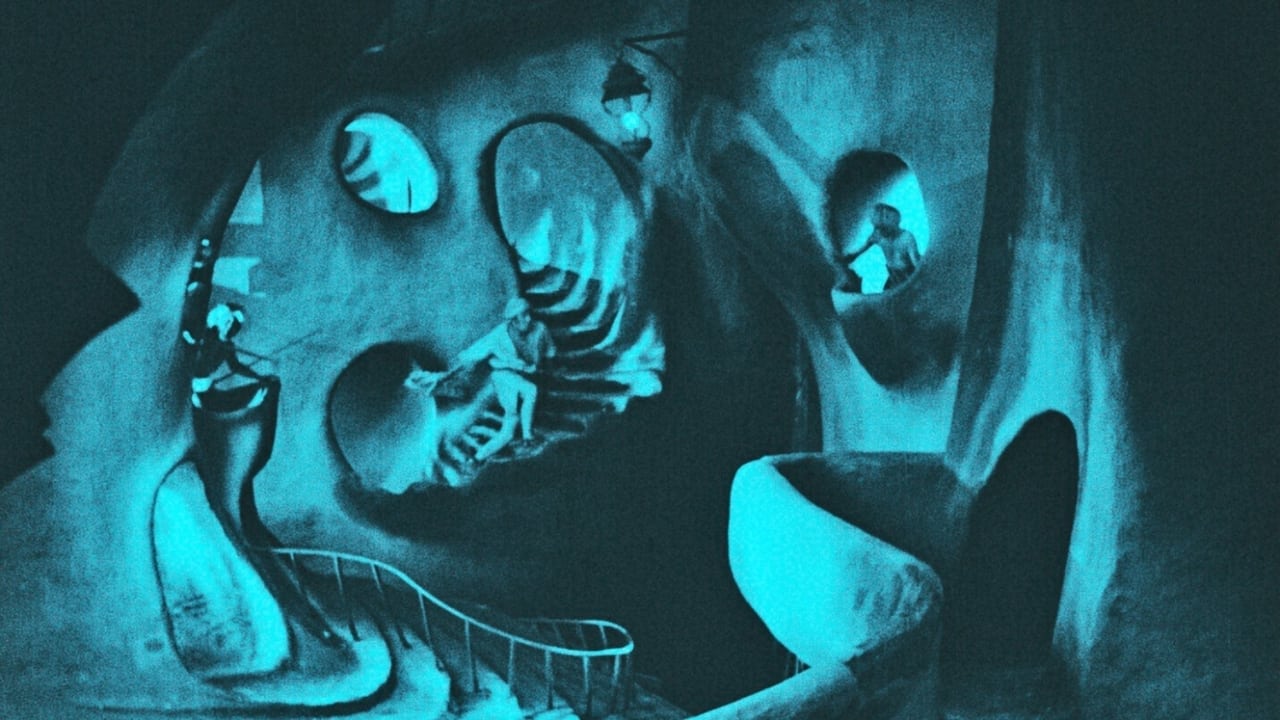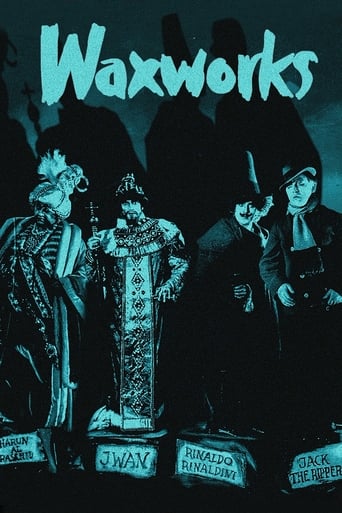

"Das Wachsfigurenkabinett" or "Waxworks" is a German silent film from 1924, so over 90 years old by now. Apparently, several versions exist as the runtime is sometimes stated slightly over 60 minutes while the version I watched had a little bit more then 80 minutes. In retrospective, I have to say I'd have preferred the 60-minute version. Birinsky, Leni and especially writer Galeen have worked on some pretty famous films from that era, but their collaboration here did not result in anything memorable. I thought the production values looked pretty weak here for the most part and this already destroyed every chance at a good horror movie because it is so essential for the genre, especially as they could not make up for it via great dialogue for example. The copy I watched was not of great quality, but I guess that's not the filmmakers' fault. At least, I have seen stuff from decades earlier that was more refined. So despite the inclusion of some pretty big names, this one here was a disappointment. I do not recommend watching it.
... View MoreThe story premise is quite simple. The owner of a wax figures shop wants to hire a writer "for publicity work in a waxworks exhibition". The hired writer, or "Poet", (William Dieterle) then creates fictional stories for three of the wax figures: Haroun al Raschid, Ivan the Terrible, and Jack the Ripper.The writer places himself and the owner's lovely daughter (who does little more than smile through the whole film) into his fictional scripts. And so what we get is a trio of short stories about these three historical figures with the writer as a central character.The first story, about Haroun al Raschid (Emil Jannings), consumes about half of the film's runtime. The second story runs about thirty minutes. And the third story (about Jack the Ripper) is mostly just an afterthought.The poet role (Dieterle) is fine. But the role played by Jannings is horrid; he's like something out of a nightmare. His bizarre clothing combined with bizarre facial expressions create a character that is quite repellent. Sans grotesque mustache, at times he resembles an inebriated fat old woman. This character is the most memorable image I have of this film, and it is not favorable.Visuals are almost as bizarre ... heavy shadows and, though technically in B&W, hues range from brownish to greenish to bluish and even lavender in a few scenes. Shapes of dwellings trend round and resemble stereotyped imperial places in Russia. Acting is horridly melodramatic.Viewers need to give very old films a lot of latitude. But "Waxworks" doesn't work for me, even making allowances for its age. Other films of the silent era are better.
... View MoreUsually in these Wax horrors, it's the notion of a life entombed in the body that is meant to unsettle, a life extended even into death (or is it the opposite?). This is the first of these films as far as I know - later came the two Houses of Wax, another Waxwork in '88, the Italian Wax Mask from an Argento story - and so the notion is more outdated, more novelistic. Each life a separate story and world, with clear boundaries between them, and acted out by the same couple that writes the stories back in the level of reality.In Baghdad we get a romantic adventure where the Caliph falls for the baker's girl. Eventually she restores balance by summoning the dead Caliph from beyond the grave for the eyes of his awe-struck vassals. It's a ploy by which the status quo of the Arabian nights is maintained. In Czarist Russia, the cruel czar who thought he would defy even death is faced with his own mortality. Instead of accepting this common fate, thus coming to understand that a king is also a common man and in so doing be rendered free of his own despotic bonds, he goes mad. It's again a ploy, the poison-maker's vengeance from beyond the grave. But he was mad to begin with, so it doesn't quite matter.The final story that blends back into the wrap-around and brings us full circle, is about a notorious killer who stalks a man and his girl. This is the segment that strikes some spark; the urbane setting diffused as dreamy, expressionist poem. It's again a ploy, this time a dream - or nightmare.Both Emil Jannings and Conrad Veidt, stars of what was then a booming film industry, relish the opportunity of playing scheming tyrants. But it's all harmless stuff.
... View MoreA poet is hired by the owner of a wax museum in a circus to write tales about Harun al Raschid, Ivan the Terrible and Jack the Ripper. While writing, the poet and the daughter of the owner, Eva, fantasize the fantastic stories and fall in love for each other."Das Wachsfigurenkabinett" is an impressive and very creative movie, changing the colors in accordance with the environment and with amazing scenarios and funny stories. The acrobatic performance of the character Assad the Baker, jumping from a tower of the palace in Baghdad to a tree, is incredible. I did not understand why the genres horror and even thriller are listed for these three romantic adventures in the world of fantasy. I liked very much the first story, indeed very funny and naive; the second one is darker; and the very short third one is weird and romantic. The locations and the atmosphere are another attraction of this great unknown silent movie. I saw an excellent restored version with 83 minutes running time. My vote is eight.Title (Brazil): "O Gabinete das Figuras de Cera" ("The Chamber of the Wax Figures")
... View More